6 Schritte zum Verständnis und zur Verwaltung der Strategie für indirekte Beschaffungskategorien

Der Direkteinkauf, wie z. B. Rohstoffe und Betriebsstoffe, steht oft im Mittelpunkt, wenn es um die Beschaffung geht. Aber was ist mit allem anderen, was Ihr Unternehmen braucht, um zu funktionieren?
Von Büromaterial und IT-Dienstleistungen bis hin zu Reisekosten und Marketingkampagnen macht die indirekte Beschaffung einen erheblichen Teil des Budgets Ihres Unternehmens aus. Dennoch haben viele Führungskräfte im Einkauf in Unternehmen Schwierigkeiten, die Transparenz und Kontrolle über indirekte Kategorien durchzusetzen.
Seit 2011 sind die indirekten Ausgaben um ca. 7% jährlich weltweit. Tatsächlich entfallen auf die indirekte Beschaffung in der Regel etwa 10% der Gesamtumsätze im Einzelhandel, je nach Teilsektor und Format unterschiedlich. Ohne eine klare Strategie geraten die Kosten außer Kontrolle, die Zahl der Anbieter nimmt zu, und die Einhaltung der Vorschriften gerät in den Hintergrund.
In diesem Artikel werden Sie durch sechs wichtige Schritte zur Beherrschung der indirekten Beschaffung geführt. Diese Schritte stellen sicher, dass Sie die Kontrolle behalten, Kosteneinsparungen erzielen und die Effizienz verbessern.
Was ist indirekte Beschaffung?
Indirekte Beschaffung bezieht sich auf den Kauf von Waren und Dienstleistungen, die nicht direkt mit der Produktherstellung oder -produktion verbunden sind, aber für den täglichen Geschäftsbetrieb unerlässlich sind. Im Gegensatz zur direkten Beschaffung, die sich auf das Endprodukt auswirkt, unterstützt die indirekte Beschaffung die Infrastruktur, die Produktivität der Mitarbeiter und die Erbringung von Dienstleistungen.
Die Rolle der indirekten Beschaffung
Bei strategischer Verwaltung wird die indirekte Beschaffung zu einem wichtigen Faktor für die Zufriedenheit der Stakeholder, Kostentransparenz und betriebliche Agilität, insbesondere in komplexen Unternehmen mit mehreren Abteilungen.
Eine optimierte indirekte Beschaffungsstrategie kann zu Folgendem führen:
- Signifikante Kostensenkungen durch konsolidierte Lieferantenvereinbarungen.
- Stärkere Lieferantenbeziehungen, Verbesserung des Serviceniveaus und der Zuverlässigkeit.
- Bessere Einhaltung der Vorschriften durch Reduzierung unberechtigter Ausgaben.
Hauptkategorien der indirekten Beschaffung
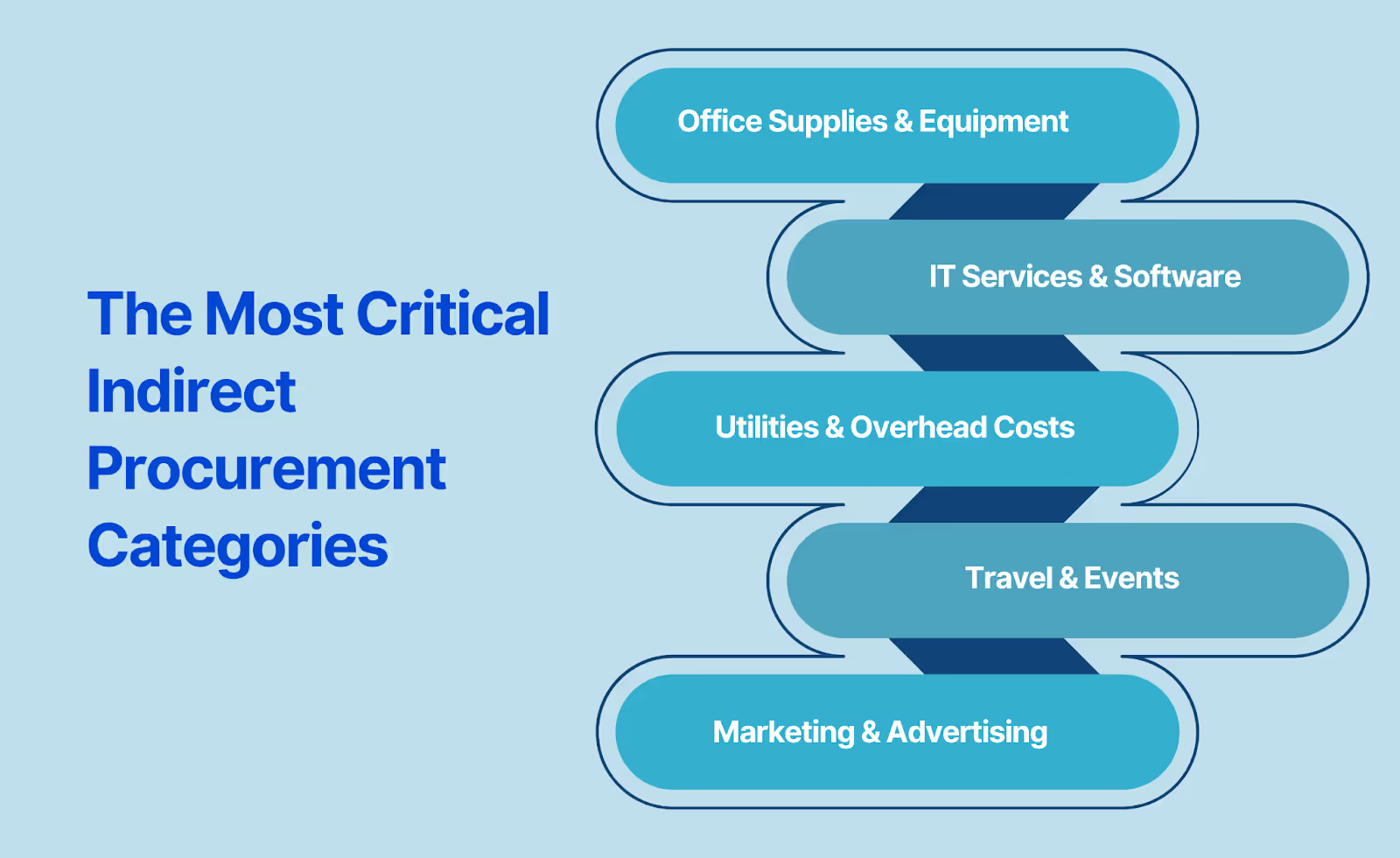
Die indirekte Beschaffung deckt eine breite Palette von Waren und Dienstleistungen ab. Diese Kategorien können zu erheblichen Kosteneinsparungen, verbesserter Effizienz und stärkeren Lieferantenpartnerschaften führen, wenn sie effektiv verwaltet werden. Ohne einen strukturierten Ansatz können die Ausgaben jedoch fragmentiert werden, was zu Ressourcenverschwendung und versteckten Kosten führt.
Hier sind einige der wichtigsten Kategorien für die indirekte Beschaffung:
- Bürobedarf und Ausstattung: Von alltäglichen Schreibwaren über hochwertige Büromöbel bis hin zu ergonomischen Arbeitsplätzen — diese Anschaffungen sorgen dafür, dass die Mitarbeiter produktiv arbeiten. Ohne eine zentrale Beschaffung laufen Sie Gefahr, für Artikel mit niedriger Priorität zu viel zu bezahlen oder mit zu vielen überflüssigen Lieferanten zusammenzuarbeiten.
- IT-Dienste und Software: Diese Kategorie umfasst Cloud-Computing, Cybersicherheitslösungen, Tools für die Zusammenarbeit und SaaS-Abonnements. 80% der Unternehmen verlassen sich inzwischen auf cloudbasierte Tools. Eine unbeaufsichtigte IT-Beschaffung kann zu unnötigen Softwarelizenzen, Sicherheitsrisiken und steigenden Kosten führen.
- Nebenkosten und Gemeinkosten: Strom, Wasser, Internet und Sicherheitsdienste sind unverzichtbar, werden aber in Beschaffungsstrategien oft übersehen. Die Aushandlung langfristiger Verträge oder die Umstellung auf energieeffiziente Lösungen können zu erheblichen Kostensenkungen führen.
- Reisen und Veranstaltungen: Geschäftsreisen, Unterkünfte, Konferenzen und Mitarbeiterschulungen sind für viele Unternehmen wichtige Budgetposten. Ohne zentrale Reiserichtlinien oder Vereinbarungen mit bevorzugten Anbietern sehen sich Unternehmen mit uneinheitlichen Preisen und übermäßigen Ausgaben konfrontiert.
- Marketing und Werbung: Diese Kategorie umfasst kostenpflichtige Medien, Inhaltserstellung, Branding-Dienste und PR-Kampagnen. Marketingbudgets können schnell außer Kontrolle geraten. Daher ist es von entscheidender Bedeutung, die Beschaffung an den Marketingzielen auszurichten, um einen optimierten ROI zu erzielen.
Jede dieser Kategorien ist mit einzigartigen Herausforderungen verbunden, bietet Ihnen aber auch die Möglichkeit, Ihre Ausgaben zu optimieren, bessere Verträge auszuhandeln und die Effizienz zu steigern. Nachdem wir uns nun mit den wichtigsten Bereichen der indirekten Ausgaben befasst haben, wollen wir uns mit den häufigsten Herausforderungen befassen, die Unternehmen bei der effektiven Verwaltung dieser Ausgaben stellen.
Die häufigsten Herausforderungen bei der Verwaltung indirekter Ausgaben und wie sie überwunden werden können
Die Verwaltung der indirekten Beschaffung kann sich ohne einen strukturierten Ansatz wie ein ständiger harter Kampf anfühlen. Im Gegensatz zur direkten Beschaffung, bei der Einkäufe genau überwacht und an den Produktionsbedarf angepasst werden, sind indirekte Ausgaben oft dezentralisiert, inkonsistent und anfällig für Ineffizienzen. Wenn sie nicht kontrolliert wird, können sie im Hintergrund Budgets belasten, die Kostentransparenz verringern und die Lieferantenbeziehungen komplizieren.
Hier sind einige der meisten gemeinsame Herausforderungen Ihr Unternehmen könnte bei der Verwaltung indirekter Ausgaben mit folgenden Problemen konfrontiert werden:
Fehlen eines formellen Genehmigungsverfahrens
Ohne eine klare Beschaffungspolitik können Einkäufe ohne angemessene Aufsicht getätigt werden, was zu unnötigen Ausgaben, Budgetüberschreitungen und Compliance-Risiken führt. Mitarbeiter bestellen Materialien, Software oder Dienstleistungen möglicherweise auf der Grundlage persönlicher Präferenzen und nicht aufgrund strategischer Bedürfnisse.
Bei betrieblichen Abläufen auf Unternehmensebene verstärken sich diese Ineffizienzen schnell in allen Geschäftsbereichen, sodass Unternehmen Auditrisiken und Kostenverlusten ausgesetzt sind.
Durch die Einrichtung eines strukturierten Genehmigungsworkflows wird sichergestellt, dass alle Ausgaben den Geschäftszielen entsprechen.
Maverick Spending
Einzelgängeroder betrügerische Ausgaben entstehen, wenn Mitarbeiter die genehmigten Beschaffungskanäle umgehen und eigenständig Einkäufe tätigen. Dies führt häufig zu höheren Kosten, verpassten Mengenrabatten und erhöhten Sicherheitsrisiken (insbesondere bei IT-bezogenen Einkäufen).
Dies ist besonders problematisch für globale Einkaufsleiter, die versuchen, die Compliance- und Einkaufsstandards in allen Regionen aufrechtzuerhalten.
Ein zentralisiertes Einkaufssystem und die Schulung der Mitarbeiter in Bezug auf die Beschaffungspolitik können eigenwillige Ausgaben eindämmen und zu Kosteneinsparungen führen.
Komplexe Beschaffungsprozesse
Die Mitarbeiter werden Wege finden, Ihr Beschaffungssystem zu umgehen, wenn es langsam, übermäßig bürokratisch oder schwer zu handhaben ist. Umständliche Genehmigungsverfahren, übermäßiger Papierkram und veraltete Systeme führen zu Ineffizienzen und Widerständen.
Die Lösung? Automatisierung von Arbeitsabläufen, Einsatz von E-Procurement-Tools und Vereinfachung der Genehmigungsschritte, um die Einhaltung von Vorschriften einfacher und intuitiver zu gestalten.
Überlastung der Anbieter und redundante Verträge
Ohne ein angemessenes Lieferantenmanagement arbeiten Unternehmen oft mit zu vielen Lieferanten für dasselbe Produkt oder dieselbe Dienstleistung zusammen, was zu fragmentierten Verträgen, verpassten Kosteneinsparungsmöglichkeiten und administrativer Komplexität führt.
Die Konsolidierung von Anbietern und die Aushandlung langfristiger Vereinbarungen mit wichtigen Partnern können die Effizienz verbessern und die Kosten senken.
Die gute Nachricht ist, dass diese Herausforderungen mit der richtigen Strategie bewältigt werden können. Durch die Implementierung eines strukturierten Beschaffungsansatzes können Unternehmen ihre Ausgaben besser kontrollieren, die Effizienz steigern und engere Lieferantenbeziehungen aufbauen. Lassen Sie uns nun die wichtigsten Schritte zur effektiven Verwaltung indirekter Beschaffungskategorien aufschlüsseln.
Lesen Sie auch: Unterschiede zwischen direkten und indirekten Ausgaben in der Beschaffung
6 wichtige Schritte zu einer wirkungsvollen Strategie für indirekte Beschaffung
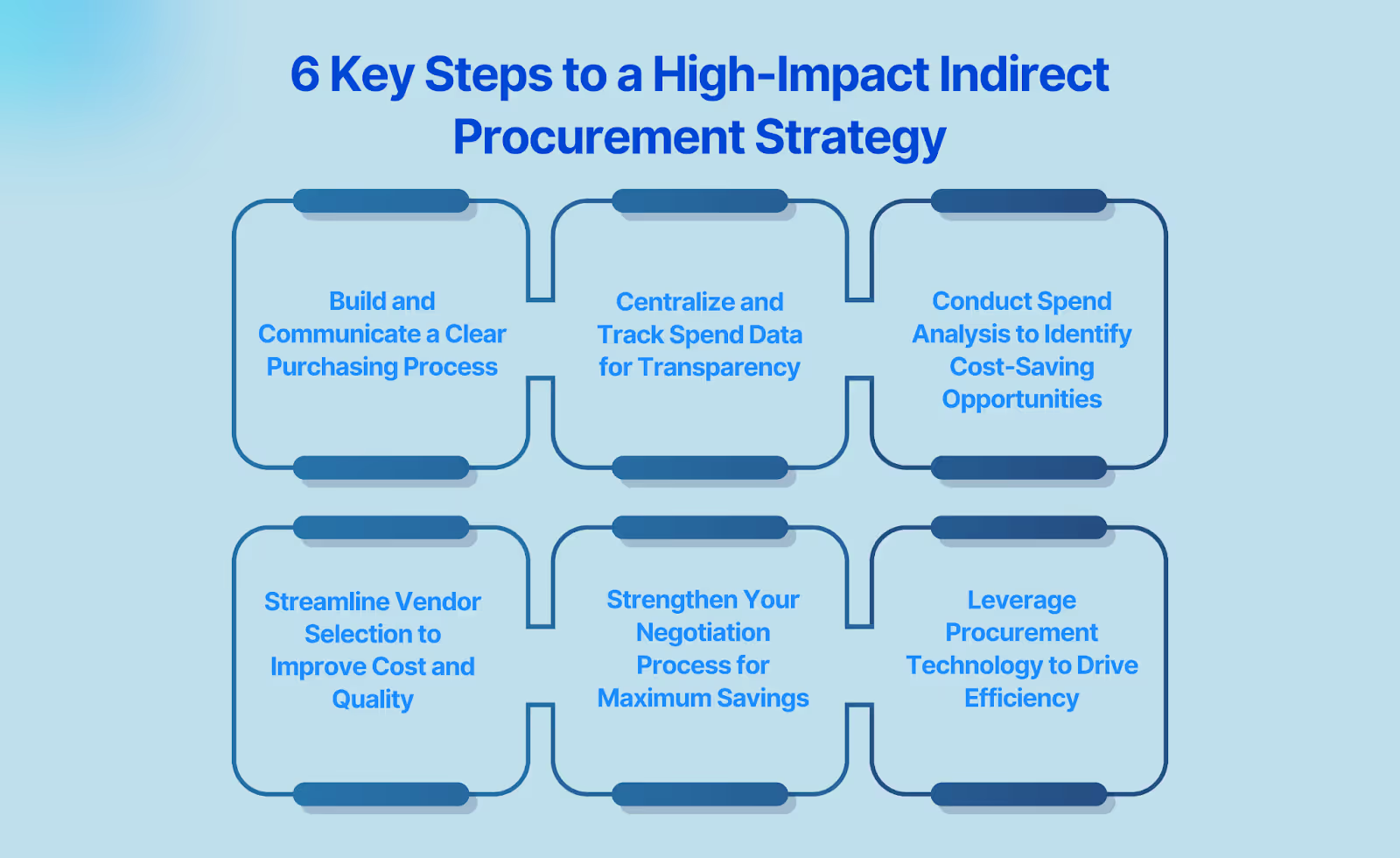
Effektives indirektes Beschaffungsmanagement senkt nicht nur die Kosten, sondern erhöht auch die betriebliche Effizienz, reduziert das Risiko und sorgt für intelligentere Ausgabenentscheidungen. Ohne eine klar definierte Strategie haben Sie jedoch häufig mit fragmentierten Daten, unkontrollierten Ausgaben und ineffizienten Lieferantenbeziehungen zu kämpfen.
Durch die Implementierung eines strukturierten Ansatzes können Sie die indirekte Beschaffung zu einem starken Faktor für den Geschäftswert machen. Gehen Sie wie folgt vor:
Schritt 1: Aufbau und Kommunikation eines klaren Kaufprozesses
Eine klar definierte Beschaffungspolitik ist die Grundlage einer effektiven indirekten Beschaffungsstrategie. Mitarbeiter können Ad-hoc-Einkäufe ohne klare Richtlinien tätigen, was zu Kostenineffizienzen und Problemen bei der Einhaltung der Vorschriften führt.
Um dies zu verhindern:
- Richten Sie strukturierte Genehmigungsprozesse ein, die auf Ausgabenschwellen basieren.
- Bieten Sie Schulungen zur Beschaffung an, um sicherzustellen, dass die Mitarbeiter die Richtlinien verstehen.
- Erstellen Sie eine transparente Dokumentation, in der Einkaufsrichtlinien und bevorzugte Lieferanten aufgeführt sind.
Ein starker Beschaffungsprozess gewährleistet Konsistenz, Rechenschaftspflicht und Kostenkontrolle in allen Abteilungen.
Schritt 2: Zentralisieren und verfolgen Sie Ausgabendaten für mehr Transparenz
Eine der größten Herausforderungen bei der Verwaltung indirekter Ausgaben ist die mangelnde Sichtbarkeit. Beschaffungsteams haben Schwierigkeiten, Ausgaben ohne zentrale Daten zu verfolgen, was zu Ineffizienzen und verpassten Einsparmöglichkeiten führt.
Um die Transparenz und Kontrolle zu verbessern:
- Implementieren Sie ein Ausgabenmanagementsystem, um Ausgaben zu verfolgen und zu kategorisieren.
- Konsolidieren Sie Einkäufe bei bevorzugten Lieferanten, um die Rabatte zu maximieren.
- Verwenden Sie Echtzeitanalysen, um Ausgabenmuster und Verbesserungsmöglichkeiten zu identifizieren.
Für CPOs hilft die Konsolidierung indirekter Ausgaben in einer einzigen Datenumgebung, die strategische Planung, die Rechenschaftspflicht der Stakeholder und verbesserte Lieferantenverhandlungen voranzutreiben.
Schritt 3: Führen Sie eine Ausgabenanalyse durch, um Möglichkeiten zur Kosteneinsparung zu identifizieren
Viele Unternehmen geben zu viel für indirekte Beschaffung aus, nur weil sie nicht regelmäßig analysieren, wohin ihr Geld fließt. Die Durchführung einer Ausgabenanalyse hilft dabei, verschwenderische Ausgaben und Möglichkeiten zur Kosteneinsparung zu lokalisieren.
Frag dich selbst:
- Kaufen mehrere Teams ähnliche Artikel separat? Die Konsolidierung von Anbietern kann die Kosten senken.
- Zahlen Sie für Software oder Dienste, die nicht ausreichend genutzt werden? Durch die Optimierung von Lizenzmodellen können Sie Geld sparen.
- Verlängern Sie ständig Verträge zu den gleichen Tarifen? Die Aushandlung besserer Konditionen kann den Wert verbessern.
Sie können proaktive Maßnahmen ergreifen, um Ihre Beschaffungsstrategie zu optimieren, indem Sie Ineffizienzen identifizieren.
Schritt 4: Optimieren Sie die Lieferantenauswahl, um Kosten und Qualität zu verbessern
Die Zusammenarbeit mit zu vielen Lieferanten führt oft zu redundanten Verträgen, fragmentierten Einkäufen und verminderter Verhandlungsmacht. Ein optimierter Anbieterauswahlprozess sorgt für bessere Preise, eine höhere Servicequalität und eine verbesserte Effizienz.
So verfeinern Sie Ihre Anbieterstrategie:
- Begrenzen Sie redundante Anbieter in jeder Kategorie, um Mengenrabatte zu erhalten.
- Bewerten Sie Lieferanten auf der Grundlage von Wirtschaftlichkeit, Serviceverlässlichkeit und Skalierbarkeit.
- Legen Sie Leistungsmaßstäbe für Lieferanten fest, um eine gleichbleibende Qualität und einen gleichbleibenden Wert sicherzustellen.
Strategisches Lieferantenmanagement wird gestärkt Lieferantenbeziehungen und stellen Sie gleichzeitig sicher, dass Ihr Unternehmen die bestmöglichen Konditionen erhält.
Schritt 5: Stärken Sie Ihren Verhandlungsprozess für maximale Einsparungen
Die indirekte Beschaffung bietet viele Verhandlungsmöglichkeiten, wenn Sie wissen, wie Sie diese nutzen können. Beschaffungsteams, die proaktiv Preise, Zahlungsbedingungen und Vertragsbedingungen aushandeln, profitieren von erheblichen Kostenvorteilen.
Verbessern Sie Ihre Verhandlungsstrategie durch:
- Verwendung von Ausgabendaten zur Rechtfertigung besserer Preis- und Vertragsanpassungen.
- Entwicklung langfristiger Lieferantenpartnerschaften zur Sicherung exklusiver Vorteile.
- Einführung leistungsorientierter Verträge, um die Anbieterziele mit Ihren Geschäftsanforderungen in Einklang zu bringen.
Eine gut ausgeführte Verhandlungsstrategie stellt sicher, dass Sie den Wert maximieren und gleichzeitig unnötige Kosten minimieren. Die Beschaffungsteams von Unternehmen können auch branchenübergreifende Daten-Benchmarks und Branchenindizes verwenden, um bei Verhandlungen mit hohem Mehrwert an Einfluss zu gewinnen.
Schritt 6: Nutzen Sie die Beschaffungstechnologie, um die Effizienz zu steigern
Technologie transformiert die Beschaffung, indem sie Arbeitsabläufe automatisiert, die Einhaltung von Vorschriften verbessert und Einblicke in Echtzeit bietet. Investitionen in Beschaffungssoftware können die Transparenz verbessern, die Entscheidungsfindung beschleunigen und den manuellen Aufwand reduzieren.
Erwägen Sie die Implementierung von:
- KI-gestützte Analysen für intelligente Ausgabenverfolgung und -prognosen.
- Automatisierte Beschaffungsplattformen zur Verbesserung der Effizienz und Durchsetzung der Einhaltung von Vorschriften.
- Cloud-basierte Lösungen für den Echtzeitzugriff auf Beschaffungsdaten, unabhängig vom Standort.
Mit der richtigen Technologie können Sie Abläufe rationalisieren, Risiken minimieren und Ihre indirekte Beschaffungsstrategie optimieren.
Durch einen strukturierten Ansatz bei der indirekten Beschaffung können Sie über einfache Kostensenkungen hinausgehen und langfristigen strategischen Wert schaffen. Eine gut verwaltete Beschaffungsstrategie spart nicht nur Geld, sondern steigert auch die Effizienz, reduziert das Risiko und stärkt die Lieferantenbeziehungen. Lassen Sie uns nun die besten Methoden für eine erfolgreiche indirekte Beschaffung untersuchen.
Best Practices für den Erfolg der indirekten Beschaffung
Bei einer gut strukturierten Strategie für die indirekte Beschaffung geht es nicht nur um Kosteneinsparungen, sondern auch darum, die Effizienz zu steigern, die Einhaltung der Vorschriften sicherzustellen und den langfristigen Wert zu steigern. Wenn Sie bewährte Einkaufspraktiken anwenden, können Sie Ihre Ausgaben besser kontrollieren, Risiken minimieren und engere Lieferantenbeziehungen fördern.
Um das Beste aus Ihrer indirekten Beschaffungsstrategie herauszuholen, sollten Sie die folgenden wichtigen Best Practices berücksichtigen:
1. Investieren Sie in Automatisierung, um Fehler zu minimieren und die Effizienz zu verbessern
Manuell Beschaffung Prozesse sind zeitaufwändig, fehleranfällig und schwer skalierbar. Durch den Einsatz der Automatisierung können Unternehmen:
- Reduzieren Sie menschliche Fehler bei Bestellungen und Genehmigungen.
- Beschleunigen Sie die Beschaffungszyklen mit digitalen Workflows.
- Setzen Sie die Einhaltung der Vorschriften durch, indem Sie Einkäufe automatisch an zugelassene Lieferanten weiterleiten.
Automatisierungstools helfen dabei, Engpässe zu beseitigen und sicherzustellen, dass sich Beschaffungsteams auf strategische Entscheidungen konzentrieren können, anstatt sich wiederholende Aufgaben zu erledigen.
2. Verfolgen Sie die Ausgabenmuster, um Möglichkeiten zur Kosteneinsparung zu identifizieren
Eine große Herausforderung bei der indirekten Beschaffung sind unsichtbare Ausgaben, Ausgaben, die ohne angemessene Kontrolle durchgehen. Durch die regelmäßige Analyse der Ausgabendaten können Unternehmen:
- Identifizieren Sie Ineffizienzen wie Doppelkäufe oder unnötige Ausgaben.
- Identifizieren Sie Möglichkeiten zur Kosteneinsparung, indem Sie Einkäufe mit weniger Lieferanten konsolidieren.
- Stellen Sie die Haushaltsausrichtung sicher, indem Sie die Ausgaben anhand der Prognosen verfolgen.
Mit einem klaren Verständnis der Ausgabentrends können Unternehmen datengestützte Entscheidungen treffen, um die Beschaffungskosten zu optimieren.
3. Schulen Sie Ihre Mitarbeiter, um verantwortungsvolles Ausgeben zu fördern
Unkontrollierte Ausgaben treten häufig auf, wenn die Mitarbeiter die Beschaffungsrichtlinien nicht kennen. Um unbefugte Käufe zu verhindern und die Einhaltung der Beschaffungsstrategien sicherzustellen:
- Führen Sie regelmäßige Schulungen zu Beschaffungsrichtlinien und bewährten Verfahren durch.
- Stellen Sie leicht zugängliche Beschaffungsrichtlinien bereit, um den Einkauf zu standardisieren.
- Fördern Sie die Zusammenarbeit zwischen Beschaffungsteams und Abteilungen, um die Abstimmung sicherzustellen.
Mitarbeiter, die den Beschaffungsprozess verstehen, halten sich mit größerer Wahrscheinlichkeit an die richtigen Verfahren, wodurch betrügerische Ausgaben reduziert und die Gesamteffizienz verbessert wird.
Indem Sie diese Best Practices in Ihre Beschaffungsstrategie einbetten, senken Sie nicht nur die Kosten, sondern entwickeln auch einen strukturierten, skalierbaren und strategischen Ansatz für das Management indirekter Ausgaben. Lassen Sie uns als Nächstes untersuchen, wie innovative Beschaffungslösungen Akirolabs kann Ihre Strategie durch die Integration von KI-gestützten Erkenntnissen und Automatisierung auf die nächste Stufe heben.
akirolabs: Ein intelligenterer, datengesteuerter Ansatz für die indirekte Beschaffung
Die indirekte Beschaffung leidet häufig unter fragmentierten Prozessen, eingeschränkter Sichtbarkeit und inkonsistenter Durchsetzung der Richtlinien. Akirolabs begegnet diesen Herausforderungen durch die Bereitstellung einer KI-gestützten, modularen SaaS-Plattform, die es Unternehmensteams ermöglicht, indirekte Ausgaben strukturiert, präzise und kollaborativ zu verwalten.
Die Plattform unterstützt jede Phase des indirekten Beschaffungszyklus durch die folgenden Funktionen:
- Zentralisierte Strategieentwicklung und Steuerung: akirolabs dient als zentrale Informationsquelle für alle Kategorienstrategien, einschließlich indirekter Kategorien wie IT, Reisen, Marketing und Bürodienstleistungen. Es macht getrennte Tabellenkalkulationen überflüssig, da Strategien in einem verwalteten, versionskontrollierten Archiv gespeichert werden, das sich an den Organisationstaxonomien orientiert.
- Integrierte Ausgabenanalyse und Szenariomodellierung: Die Plattform ist mit bestehenden ERP- und Ausgabenanalysesystemen verbunden, um indirekte Ausgaben zu konsolidieren und zu kategorisieren. Mithilfe integrierter Tools können Beschaffungsteams Ausgabenmuster analysieren, Ineffizienzen identifizieren und Beschaffungsszenarien simulieren, um Möglichkeiten zur Kosteneinsparung aufzudecken.
- Lieferantenrationalisierung und Leistungsverfolgung: akirolabs trägt dazu bei, die Zahl der Anbieter zu reduzieren, indem es Lieferantenbewertung, Vertragsausrichtung und strategische Konsolidierung ermöglicht. Beschaffungsteams können die Leistung der Lieferanten anhand von Serviceniveaus, Compliance-Kennzahlen und finanzieller Stabilität bewerten, um langfristige Partnerschaften zu unterstützen.
- KI-gestützte strategische Empfehlungen: Der integrierte KI-Assistent AkiroAssist bietet kontextbezogene Vorschläge zur Verbesserung der Strategiequalität, zur Optimierung der Lieferantenauswahl und zur Abstimmung der Ausgaben an den Geschäftszielen. Er verbessert die Entscheidungsfindung, indem er Marktinformationen in Echtzeit mit historischen Leistungsdaten kombiniert.
- Unterstützung funktionsübergreifender Beschaffungsinitiativen: Die Plattform ermöglicht es Benutzern, BeyondCategory-Strategien für abteilungsübergreifende Initiativen zu entwickeln, z. B. Nachhaltigkeitsprogramme oder zentralisierte Marketingbeschaffung. Dies gewährleistet die Koordination zwischen den Stakeholdern und die Konsistenz zwischen den Geschäftsbereichen.
- Integrierte Zusammenarbeit und Einbindung von Stakeholdern: Funktionen wie Stakeholder-Mapping, Verteilung von Umfragen und gemeinsame Erkenntnisse ermöglichen es der Beschaffung, Abteilungen wie IT, Personal, Finanzen und Marketing während des gesamten Strategieerstellungsprozesses einzubeziehen. Dies fördert die Abstimmung, die Rechenschaftspflicht und eine schnellere Entscheidungsfindung.
Mit Akirolabs, wird die indirekte Beschaffung zu einer wiederholbaren, erkenntnisgestützten Funktion, die die Kostenkontrolle, die Einhaltung von Richtlinien und die unternehmensweite Wertschöpfung unterstützt. Sie ersetzt den Ad-hoc-Einkauf durch strukturierte Strategien, die kollaborativ, transparent und über Regionen und Abteilungen hinweg skalierbar sind.
Fordern Sie eine personalisierte Demo an und erfahren Sie, wie Akirolabs Ihre indirekte Beschaffungsstrategie in großem Maßstab optimieren kann.
Fazit
Bei der Beherrschung der indirekten Beschaffung geht es nicht nur darum, Kosten zu senken, sondern auch darum, eine intelligentere, agilere und datengesteuerte Einkaufsfunktion zu schaffen, die den langfristigen Geschäftserfolg fördert. Unternehmen, die auf Automatisierung, Analytik und strategisches Lieferantenmanagement setzen, verschaffen sich einen Wettbewerbsvorteil, indem sie Ineffizienzen reduzieren, Risiken minimieren und den Wert maximieren.
Die Zeit der reaktiven Beschaffung ist vorbei. Durch die Implementierung strukturierter Prozesse, den Einsatz von KI-gestützter Technologie und die Pflege starker Lieferantenbeziehungen können Sie die volle Kontrolle über Ihre indirekten Ausgaben behalten, die Transparenz erhöhen und ein neues Maß an Effizienz erreichen.
Jetzt ist es an der Zeit zu handeln. Lassen Sie nicht zu, dass unkontrollierte indirekte Ausgaben Ihre Ressourcen belasten. Rationalisieren, automatisieren und optimieren Sie mit Akirolabs.
Buchen Sie noch heute eine Demo um heute den nächsten Schritt in Richtung einer intelligenteren, kostengünstigeren und strategischeren Beschaffungsstrategie zu tun.
Was macht ein erfolgreiches Pilotprojekt mit Akirolabs aus?
Wir definieren Erfolg gemeinsam mit Ihrem Team. Zu den typischen Ergebnissen gehören die Strategieerstellung für Prioritätskategorien, messbare Prozessverbesserungen und interne Abstimmung. Wir bieten volle Unterstützung und einen klaren Zeitplan für die Bewertung.
Kann ich die Plattform nach der Demo praktisch ausprobieren?
Ja, wir bieten geführte Piloten und Sandbox-Umgebungen an, je nachdem, in welcher Phase des Kaufprozesses Sie sich befinden. Diese geben dir und deinem Team die Möglichkeit, Funktionen in deinem eigenen Kontext zu erkunden.
Wer sollte an der Demo meiner Organisation teilnehmen?
Wir empfehlen, wichtige Stakeholder aus Ihrem Führungsteam für die Beschaffung, aus der Kategorie Management und aus den Gruppen für Exzellenz oder Transformation im Bereich Beschaffung einzubeziehen. Die Einbeziehung von Interessenvertretern aus dem Unternehmen kann auch hilfreich sein, um zu demonstrieren, wie die Plattform die funktionsübergreifende Zusammenarbeit erleichtert.
Was werde ich während einer Akirolabs-Demo sehen?
Während der Demo sehen Sie die komplette Akirolabs Category Strategy Workbench in Aktion, einschließlich des kollaborativen Workflows, der KI-gestützten Erkenntnisse von AkiroAssist, der Funktionen zur strategischen Szenariomodellierung und der Strategy One-Pager-Funktion. Wir passen die Demonstration so an, dass sie sich auf Aspekte konzentriert, die für die Bedürfnisse Ihres Unternehmens am relevantesten sind.
Kann ich sehen, wie Akirolabs mit unseren spezifischen Kategorien funktionieren würde?
Ja, wir können die Demo so anpassen, dass sie zeigt, wie Akirolabs mit Ihren spezifischen Kategorien und Ihrer Beschaffungsstruktur zusammenarbeitet. Teilen Sie uns Ihre Schwerpunktbereiche im Voraus mit und wir passen die Demonstration entsprechend an.
Wie lange dauert eine typische Demo?
Eine Standarddemo dauert etwa 45-60 Minuten und bietet ausreichend Zeit für einen umfassenden Überblick über die Plattform und eine Diskussion Ihrer spezifischen Anforderungen. Wir können den Zeitplan an Ihre Verfügbarkeit und Ihre Interessengebiete anpassen.
Sind Sie bereit, Ihre Beschaffungsstrategie zu transformieren?
Es gibt einen besseren Weg, die Beschaffung zu erledigen. Das ist IT.
.avif)






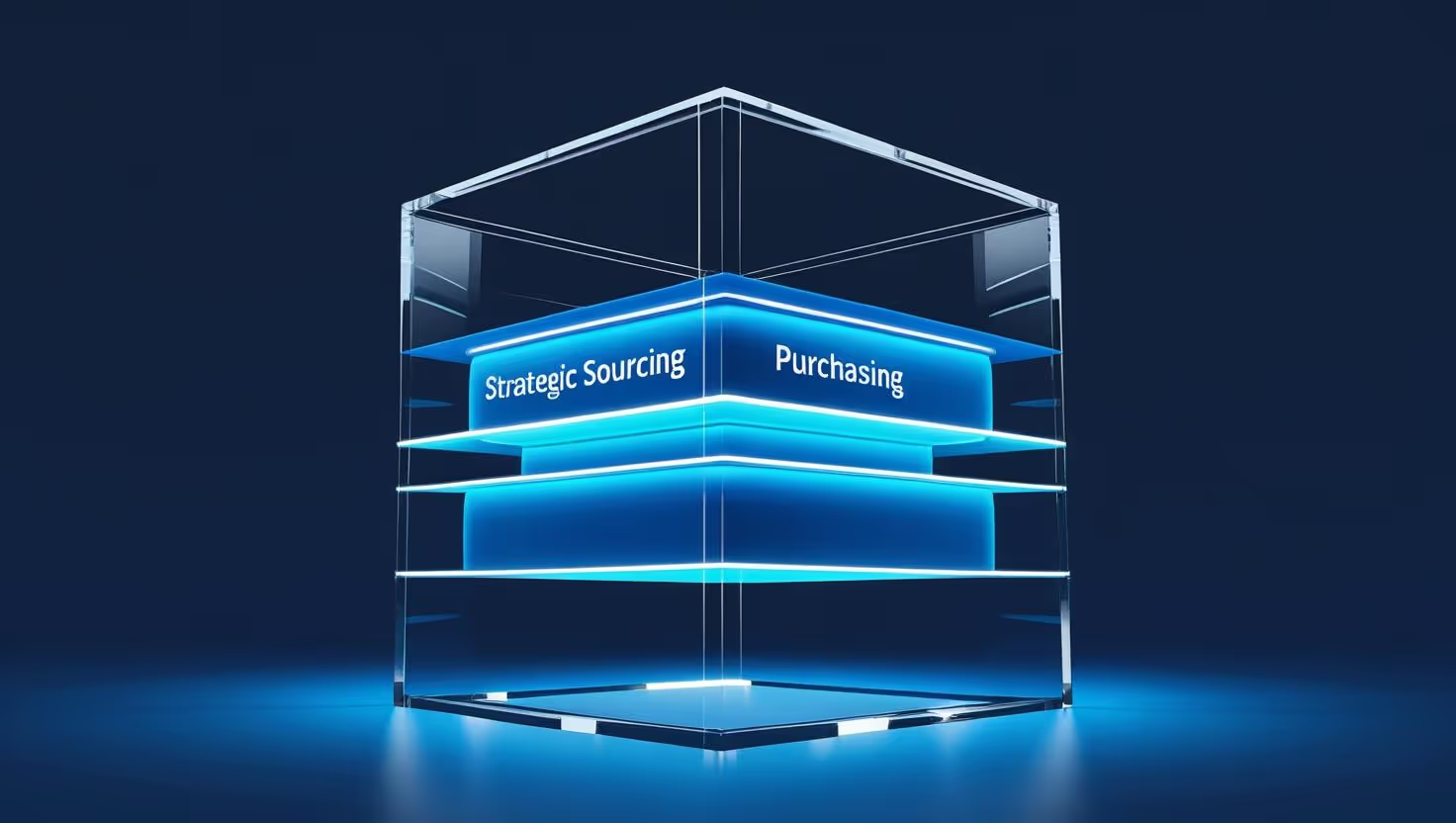





















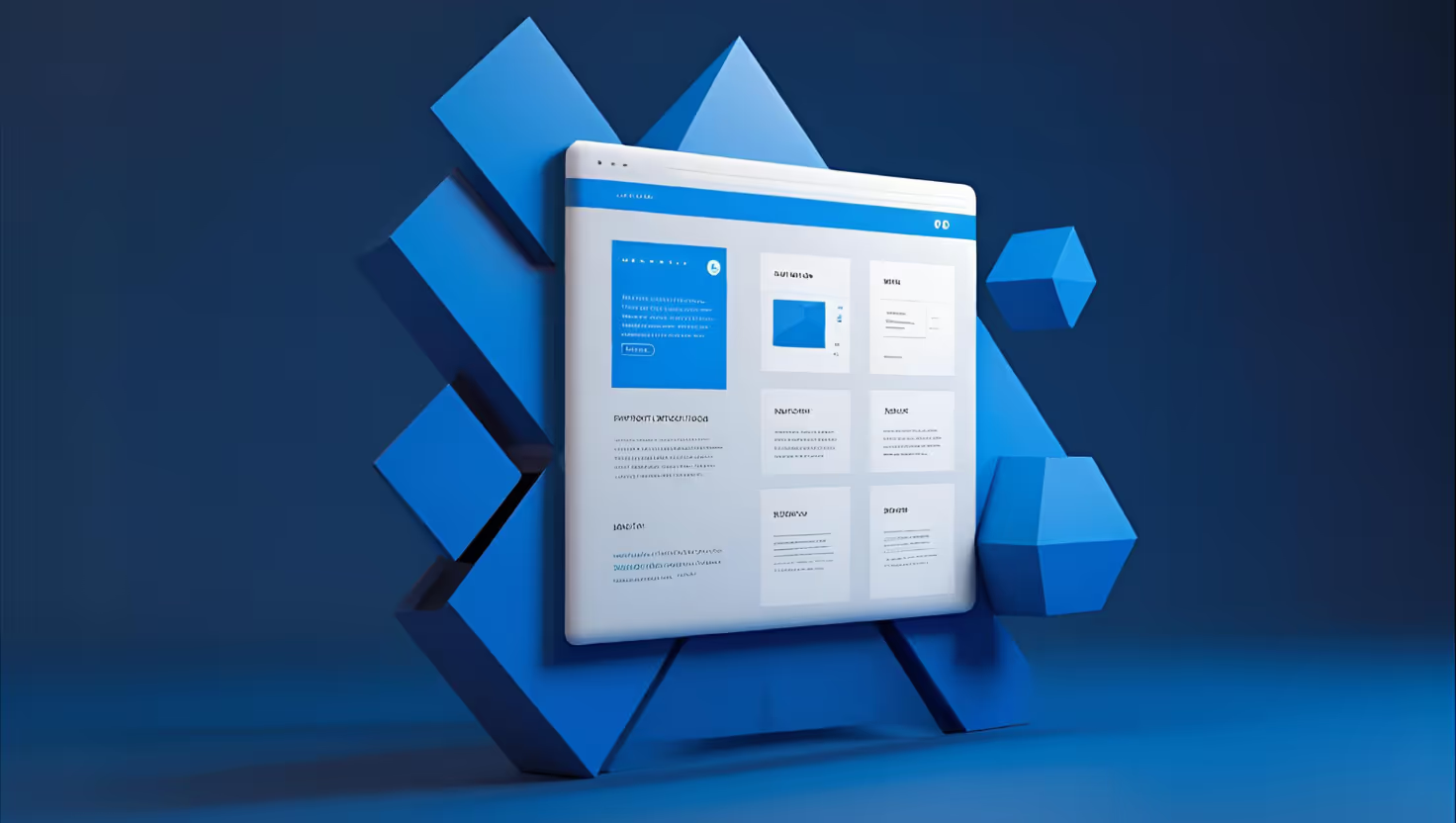









































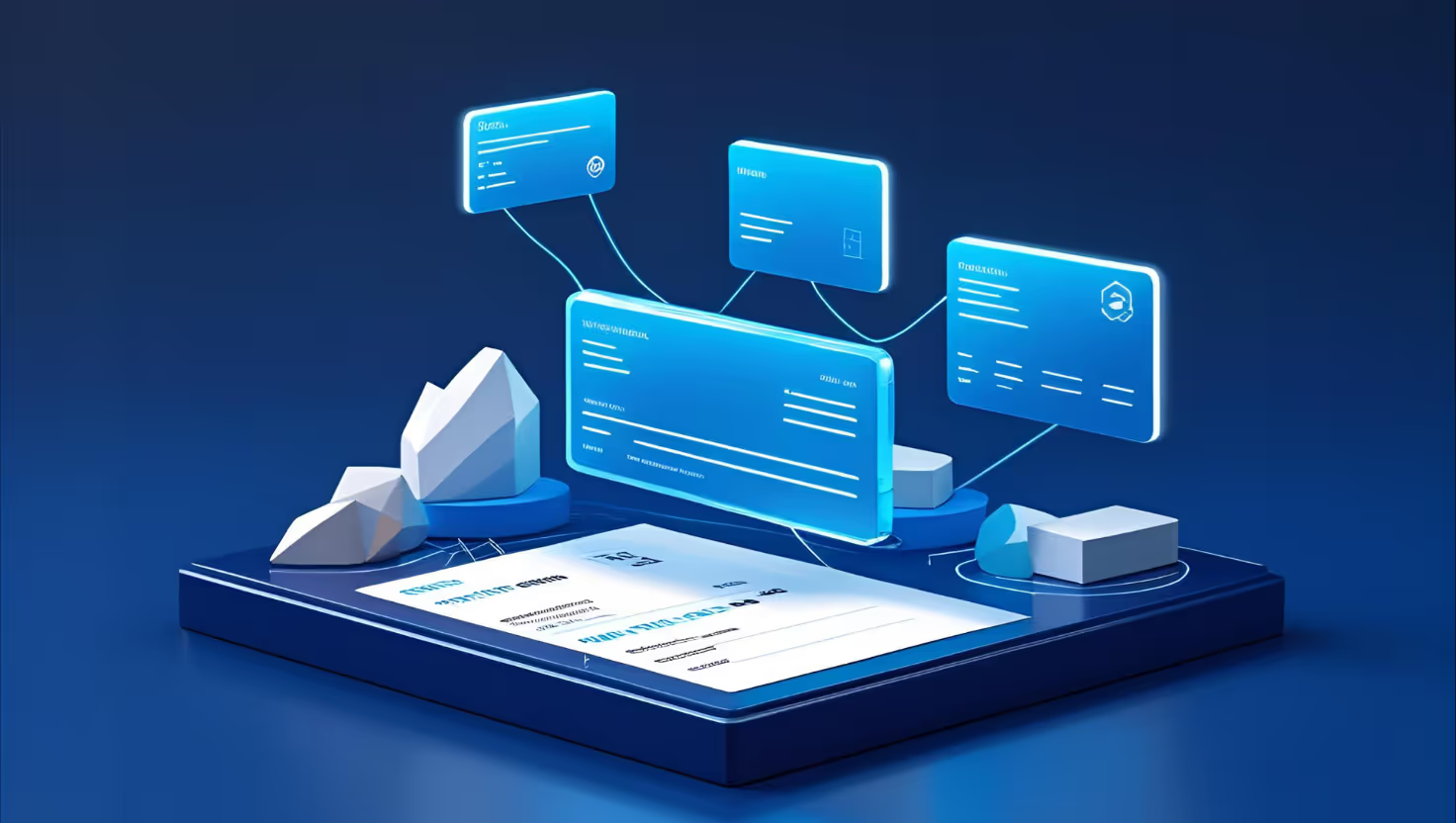








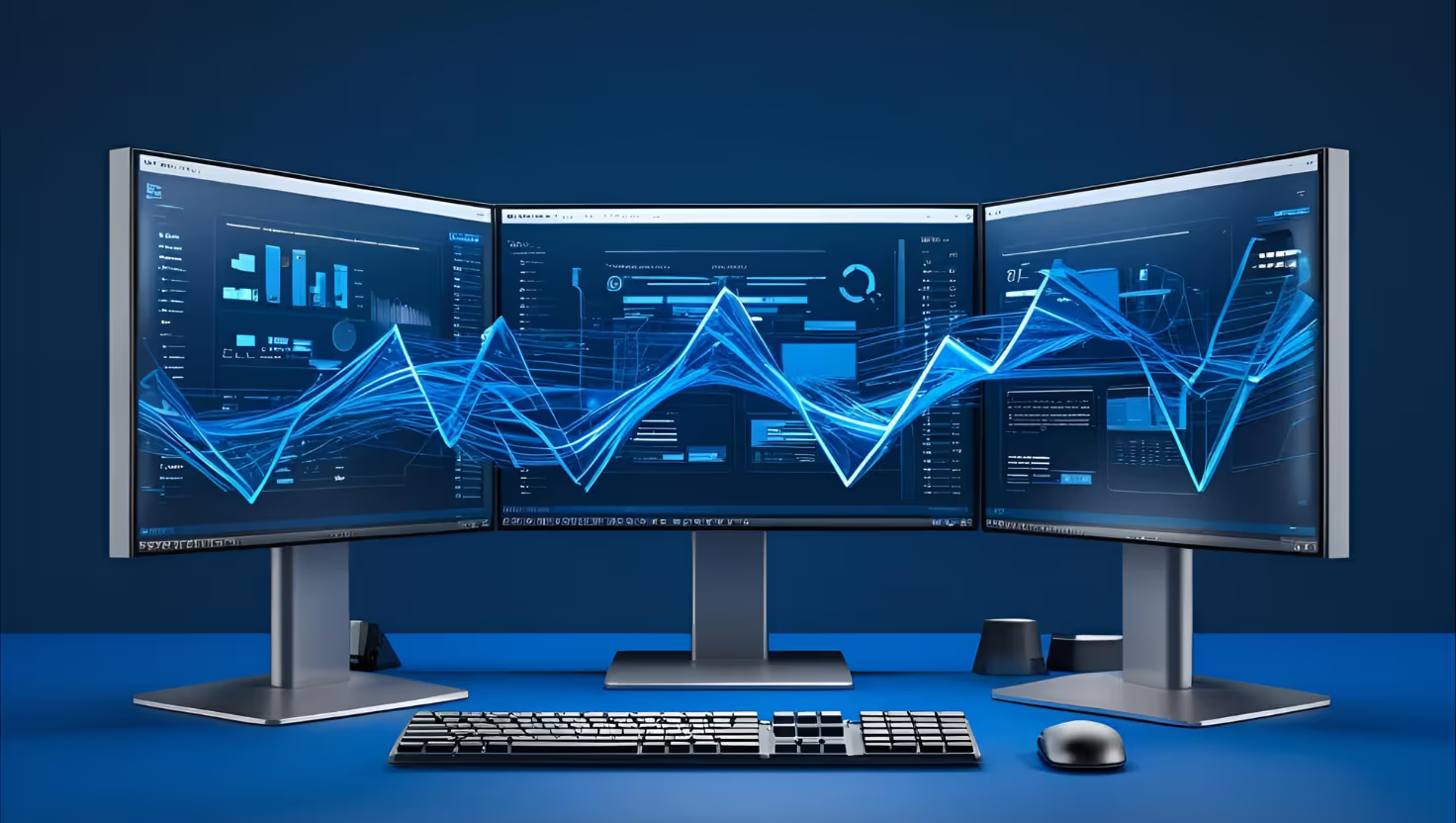





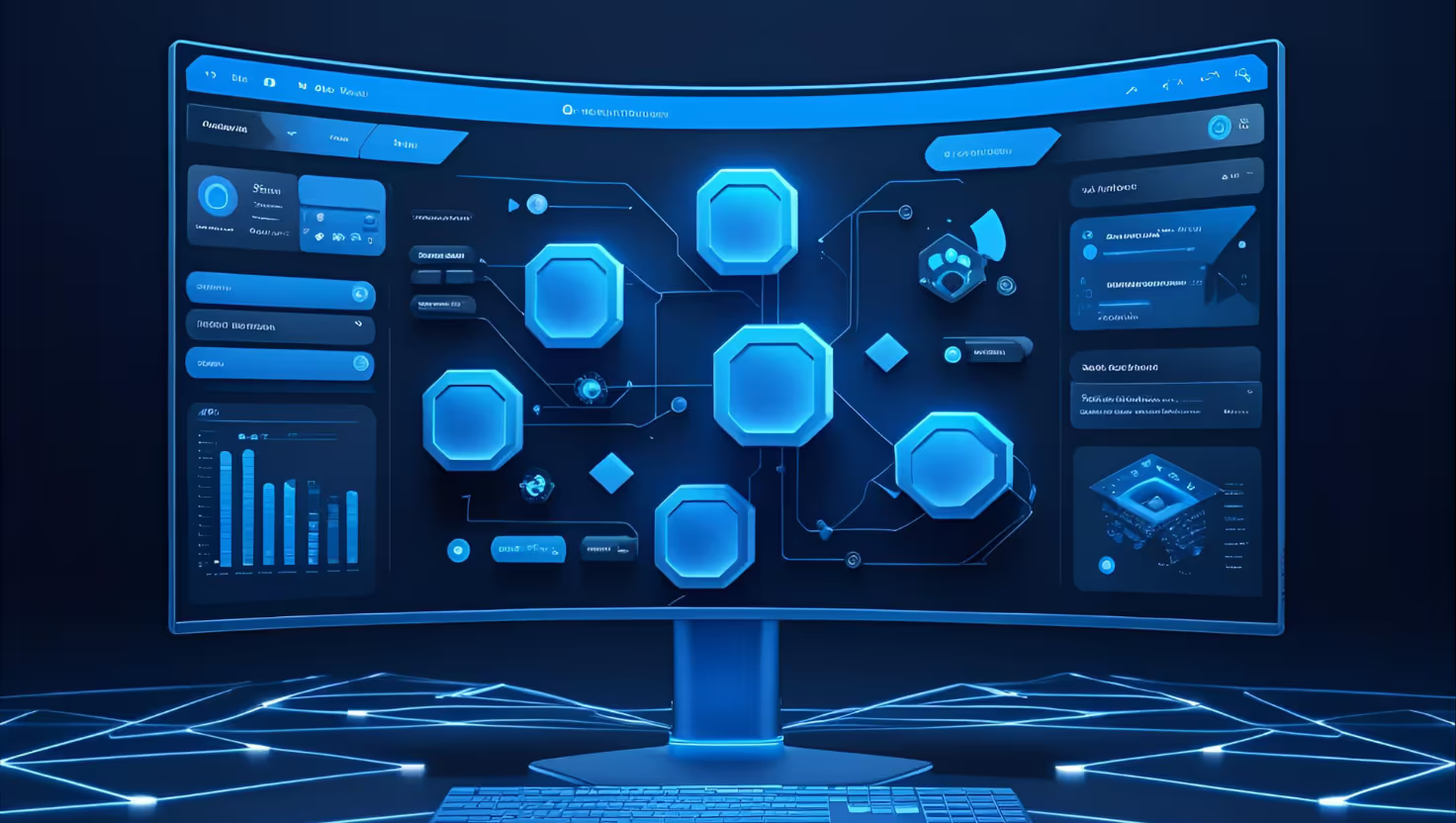












.avif)









